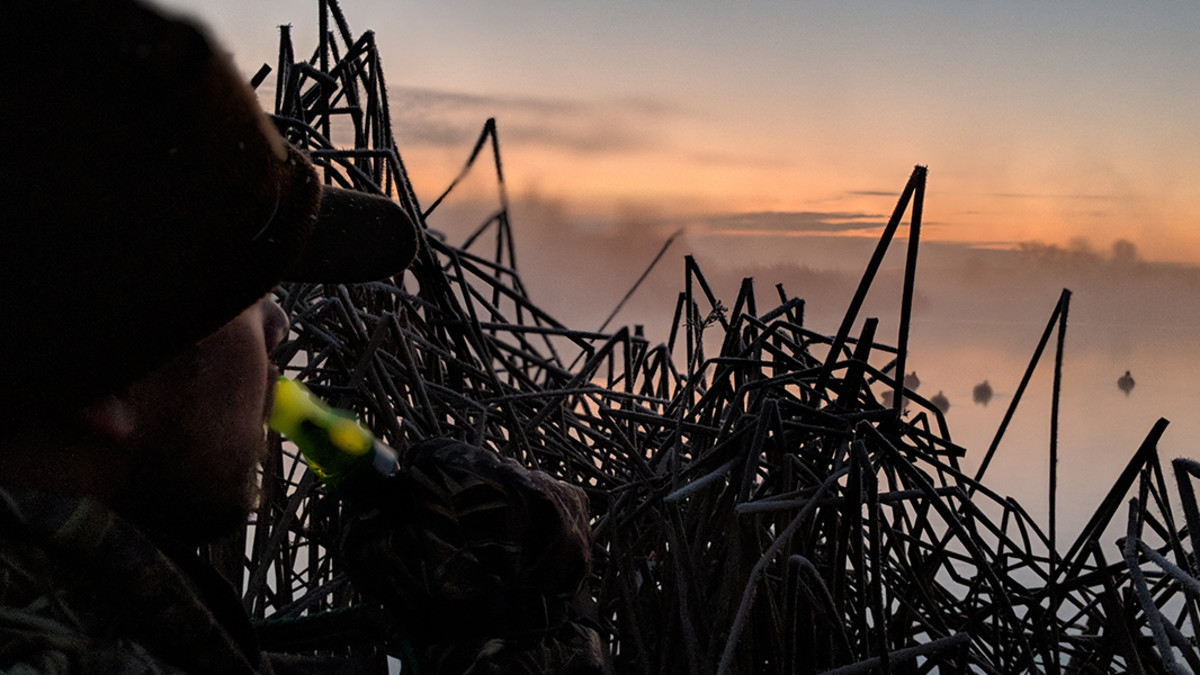
Unlike most game animals, which are managed on the state level, waterfowl is managed both on the state and federal levels. As a waterfowl hunter, it is your responsibility to know and follow all the laws that pertain to the activity. These rules change every year, so check them thoroughly each season before you hunt.
Federally, all of the nation’s ducks and geese are regarded as belonging to one of four flyways, based on their particular migration corridor, Atlantic, Mississippi, Central, and Pacific.
Each flyway has an administrative council with one member from each state within that flyway to help formulate state/regional regulations with the U.S. Fish and Wildlife Service. Other North American countries have a say as well. The states and their associated flyways are listed below.
Atlantic Flyway
Connecticut, Delaware, Florida, Georgia, Maine, Maryland, Massachusetts, New Hampshire, New Jersey, New York, North Carolina, Pennsylvania, Rhode Island, South Carolina, Vermont, Virginia, and West Virginia.
Mississippi Flyway
Alabama, Arkansas, Indiana, Illinois, Iowa, Kentucky, Louisiana, Michigan, Minnesota, Mississippi, Missouri, Ohio, Tennessee, and Wisconsin.
Central Flyway
Montana, Wyoming, Colorado, New Mexico, Texas, Oklahoma, Kansas, Nebraska, South Dakota, and North Dakota.
Pacific Flyway
Alaska, Arizona, California, Idaho, Nevada, Oregon, Utah, Washington, and those portions of Colorado, Montana, New Mexico, and Wyoming west of the Continental Divide.
Overview of Basic Terms and Regulations
Shooting hours
You can only hunt waterfowl during open shooting hours, usually starting 1/2 hour before sunrise and ending at sunset.
Closed season
You cannot hunt waterfowl during the closed season.
Daily bag limit
You can take only one daily bag limit in any one day. This limit determines the number of waterfowl you may legally have in your possession while in the field or while in route back to your car, hunting camp, home, or other destination.
Wanton waste
You must make a reasonable effort to retrieve all waterfowl that you kill or cripple and keep these birds in your actual custody while in the field. You must immediately kill any wounded birds that you retrieve and count those birds toward your daily bag limit.
Tagging
You cannot put or leave waterfowl at any place or in the custody of another person unless you tag the birds with your signature, address, number of birds identified by species, and the date you killed them.
Rallying
You cannot hunt waterfowl that have been concentrated, driven, rallied, or stirred up with a motorized vehicle or sailboat.
Dressing
You cannot completely field-dress waterfowl before taking them from the field. The head or one fully feathered wing must remain attached to the birds while you transport them to your home or to a facility that processes waterfowl.
Dual violation
A violation of a State waterfowl hunting regulation is also a violation of Federal regulations.
Duck stamp
If you are 16 or older, you must carry on your person an unexpired Federal migratory bird hunting and conservation stamp. You must validate your duck stamp by signing it in ink across the face before hunting.
Migratory Bird Harvest Information Program (HIP)
Unless exempt from license requirements in the State where you are hunting, you must enroll in the HIP and carry proof of current enrollment while hunting.
Protected birds
Federal law prohibits the killing of non-game migratory birds. Protected birds that you could encounter while waterfowl hunting include songbirds, eagles, hawks, owls, vultures, herons, egrets, and woodpeckers.
You May NOT Hunt Waterfowl:
- With a trap, snare, net, rifle, pistol, swivel gun, shotgun larger than 10 gauge, punt gun, battery gun, machine gun, fish hook, poison, drug, explosive, or stupefying substance.
- From any low floating device that conceals you beneath the surface of the water.
- From a motorboat or sailboat, unless the motor is off or the sail is furled and the vessel is no longer in motion.
- Using live birds as decoys.
- While possessing any projectile other than nontoxic shot.
- From or by means, aid, or use of any motor vehicle, motor-driven land conveyance, or aircraft, unless you need the later due to a physical disability.
- Using recorded or electrically amplified bird calls or sounds, or imitations of these calls and sounds.
- With a shotgun that can hold more than three shells, unless you plug it with a one-piece filler that cannot be removed without disassembling the gun.
- The latter two restrictions do not apply during light-goose-only seasons in certain authorized areas of the Central and Mississippi Flyways.
- Over bait. The act of baiting is the direct or indirect depositing or exposing of salt or feed that could attract waterfowl to specific areas for hunters to take. If an area has been intentionally or unintentionally baited, is off limits to hunting for 10 days. “Bait” or “baiting” includes:
- Any crop that has not been harvested but that has been rolled or disced.
- Crops that have been harvested outside of recommended harvest dates.
- Crops that have been damaged by livestock/other types of manipulation that expose feed.
- Any area where grain is present and stored, grain elevators, grain bins, etc.
- Any areas where grain is present for the purpose of feeding livestock.
- Freshly planted wildlife food plots containing exposed grain.
- Croplands where a crop has been harvested and the removed grain is redistributed to the same lands.
You MAY:
- Hunt waterfowl in unharvested standing crops and flooded fields, where grains are scattered solely as a result of agricultural planting, harvesting, or post-harvest processes.
- Lands where top-sown seeds are scattered as a result of a normal agricultural planting and
- where non-agricultural, native, or naturalized plant species that are growing in response to planting or from existing seeds.
If you have additional questions about waterfowl hunting and the law, contact the nearest U.S. Fish and Wildlife Service law enforcement office or one of the Service’s regional law enforcement offices.




